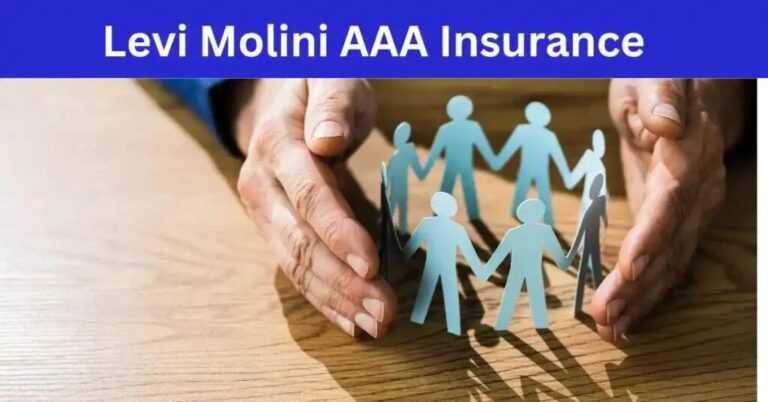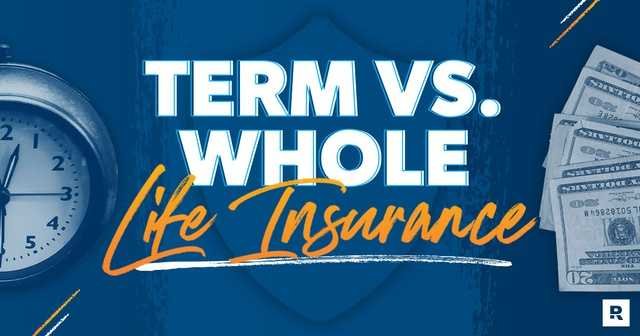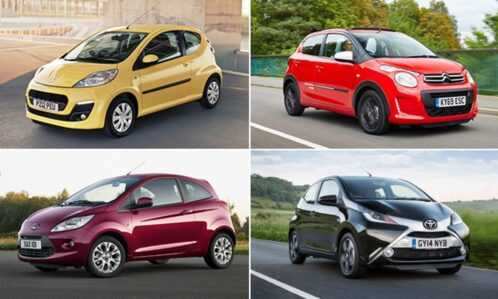How Do I Know If I Have Gap Insurance?
How do I know if I have gap insurance? Gap insurance is a form of insurance that can be very helpful to drivers who have purchased a car with financing, as it provides coverage if the car is destroyed or stolen while the driver is still paying off the loan. If you are a driver who has purchased a vehicle this way, you may be wondering, “How Do I Know If I Have Gap Insurance?” Fortunately, there is a wealth of information available to put your mind at ease.
As you read on, you’ll learn everything you need to know about the ins and outs of gap insurance and find out if you’re protected.
Do you know if you have Gap insurance?
When you first bought your car, you must have gone through a lot of paperwork. Chances are the printout you received at the dealership had a lot of numbers in it and you were more interested in the ones showing how much money you would have to pay for the car each month.
The truth is that without going into details with the dealer, you will not be 100% sure if you have differential insurance. At this point, the only way to be sure is to contact the dealer or your insurer. They will have this information in their records.
How Do I Know If I Have Gap Insurance?
There are several ways to determine whether you have gap insurance. Here are some of the most common methods:
Check Your Insurance Policy
If you have an auto insurance policy, you can check your policy documents to see if gap insurance is listed as a type of coverage. It may be included as an add-on or endorsement to your policy, or it may be listed as a separate policy.
Contact Your Insurance Company
If you’re not sure whether you have gap insurance, you can contact your insurance company and ask. They should be able to tell you whether you have this coverage and how much it will pay out if you need to use it.
Check with Your Lender
If you financed your vehicle through a lender, they may require you to have gap insurance. You can check your loan documents to see if this coverage is required or contact your lender to confirm.
Check Your Purchase or Lease Agreement
If you purchased or leased your vehicle from a dealership, your purchase or lease agreement may include information about gap insurance. It may be included in the price of the vehicle or offered as an add-on.
Check with Your State’s Insurance Department
Each state has its own insurance regulations, and some require insurers to provide gap insurance or offer it as an option. You can check with your state’s insurance department to see if this coverage is mandatory or if insurers are required to offer it.
What Is Gap Insurance On A Car?
Gap insurance is a supplemental auto policy that covers any difference between the insured value of a vehicle and the loan or lease balance the owner must pay. If your vehicle is totaled or stolen before the loan is paid off, gap insurance will cover any difference between your auto insurance payment and the amount you owe on the vehicle.1
If you are financing the purchase of a vehicle, your lender may require you to purchase differential insurance for certain types of cars, trucks, or SUVs. This especially includes vehicles that can depreciate and lose value faster than normal, such as luxury sedans or SUVs, or certain types of SUVs.
Here’s a basic explanation of how gap insurance works.
Let’s say you bought a car for $35,000. You still owe $30,000 if the car is destroyed in a covered collision. Your collision coverage reimburses you up to the full depreciated value of the vehicle. Let’s say it’s $28,000. If you don’t have gap insurance, you’ll have to pay $2,000 out of pocket. But if you have gap insurance, the insurance company will pay $2,000.
If you’re wondering, “Is gap insurance worth it?” So keep in mind the well-known fact about car appraisal: the moment you drive that car off the forecourt, it immediately starts to depreciate. So even if you have an accident within the first week of purchasing the vehicle, the difference between your loan principal and the car’s current value is likely to be significant.
How does gap insurance work?
It’s pretty easy for a driver to owe the lender or leasing company more than the car is worth in the first few years. A small down payment and a long loan or lease will do the trick, at least until your monthly payments add up to enough equity in the vehicle.
In terms of making claims and vehicle appraisals, equity must be equal to the present value of the car. That value, not the price you paid, is what your regular insurance will pay if the car crashes. The problem is that cars depreciate quickly in the first few years on the road. The average car loses 10% of its value in the first month after purchase.
If your vehicle has an accident, your policy will not cover the cost of replacing the car with a new vehicle. You will receive a check for the sale price of a car similar to yours on a used car lot. Insurers call this the actual cash value of the vehicle.
Gap insurance does not cover that specific gap. Payments are based on actual cash value, not replacement cost, which can help minimize financial losses for you.
Do I Need Gap Insurance If I Have Full Coverage?
If you have full coverage auto insurance, you may not need gap insurance. Full coverage insurance typically includes collision and comprehensive coverage, which can help pay for repairs or replacement of your vehicle in the event of an accident or theft. However, if you owe more on your vehicle than it is worth, gap insurance can provide additional protection and help ensure that you don’t have to pay out of pocket if you have a total loss.
What is and is not covered by gap insurance?
Gap insurance can be a beneficial part of your auto insurance coverage, but it only protects you in certain situations. Here’s when gap coverage will (and won’t) protect you:
Does the gap insurance cover theft?
Yes, if you are a victim of car theft, gap coverage will reimburse the difference between your comprehensive coverage and the value of your car.
Does gap insurance cover a car that has been destroyed in an accident?
Yes, in situations where your car has been damaged beyond repair, gap coverage comes in handy.
Does gap insurance cover me if my car is not a total loss?
No, Gap insurance only plays a role if your car cannot be repaired or is unaffordable.
Does the gap insurance cover my deductible?
No, Even if you have gap insurance for your car, you are still responsible for paying the hull or deductible.
Does Gap Insurance Cover Personal Injury or Death?
No, Gap insurance is only relevant for damage to your car and does not cover anything related to medical care, funeral expenses, or lost wages.
When does the Gap insurance, not payout?
Gap insurance can offer a solution if you lease or finance your vehicle. You can usually receive a payment within six weeks of a claim. But there is a list of situations where you may not pay, although it depends on the provider, among other things.
You do not receive payment:
- If your primary insurer rejects your claim. That could be due to careless driving or a failed sobriety test in the field.
- If you use the vehicle for commercial purposes, such as driving to school or for private rental
- If you have stopped paying premiums
- If you have already applied for the same gap insurance before
- If there is no “gap” to fill. If there’s no difference between the auto insurance settlement and the original price you paid, your coverage won’t have any difference to make up for.
Keep in mind that the reasons may differ per insurer. For example, GEICO gap insurance has different terms than progressive gap insurance.
If you took out the loan yourself, you may already know the reasons for disqualification. You can also contact the dealer.
Keep in mind that while the term “full coverage” sounds like it covers everything, it doesn’t replicate the work done by gap insurance. So if you want protection against breaches, you have to purchase it separately.
Purchase Gap Insurance
If it turns out you didn’t have differential insurance when you bought the car, the good news is it’s not too late. Depending on the model year of your vehicle, you may still be able to purchase gap insurance. This is something you will probably want to consider as a serious accident with no gap insurance could put you in a deep financial hole.
The easiest and probably cheapest way is to ask your auto insurance company if they can add gap insurance to your existing policy. Don’t forget to compare prices online to make sure you get the best deal.
Another option is to take out a gap policy with the car dealer. But the price will be higher than what a major insurer offers.
Where can I buy Gap insurance?
A decent comparison site will show you the prices and benefits of different providers such as AAA gap insurance, progressive gap insurance, and others.
Can You Get Gap Insurance After Buying a Vehicle?
Generally yes. It is best to contact your insurer and ask if you can add it to your existing policy.
Can you get gap insurance for a used car?
Keep in mind that if you have a used car, gap insurance is a little less useful because used vehicles don’t depreciate at the same rate as new ones. Yes, you can get it if you want, but if you look at how much it costs per month, you can reasonably decide it’s not worth it.
How long do you have to take out Gap insurance?
There is no hard and fast rule about how long after you buy a vehicle you can get gap insurance. With some insurers, it can take up to three years. But your options and benefits are greater the sooner you buy them. It’s not so much about how long you have to take out gap insurance, it’s about which providers offer a deal that works for me and how long you can wait.
Do I need Gap Insurance?
If you’re wondering whether you need car gap insurance, that’s up to you. You don’t have to buy it; You can drive without it, but ask yourself if you could handle a potential shortfall of thousands of dollars if your car were written off or stolen. Maybe that’s a loss you can handle or at least a risk you can take, but it’s still a conversation you need to have with yourself.
Who Should Get Gap Insurance?
Not all drivers qualify for gap insurance and not all eligible drivers should get it.
Gap insurance is only available if you bought your car with a loan or if you lease your car. If you fully own your vehicle, you don’t need to consider getting gap coverage. Can I Get Car Insurance Without A License?
Even if you financed your car, you only need gap coverage if the amount you owe is more than the value of the car. The best way to determine if you need coverage is to find the cash value of your car and subtract it from the amount you owe.
You can’t find the exact amount your insurance company uses for the actual cash value of your vehicle, but you can approximate your car’s value by visiting a local appraiser or looking it up in Kelley Blue Book.
For example, we found that the Kelley Blue Book value of a 2017 Mini Cooper was around $13,000. If you owe $15,000 on that car, you’ll be underwater and would benefit from covering the holes.
Calculating the difference between the value of your car and what you owe is the best way to know if you need it. You may also be more likely to need gap coverage if any of the following apply to you:
- Your lease or loan agreement requires it: Your lease or finance company may require gap insurance to protect you in the event of a total loss. It’s not because it’s required to be included in your loan or lease, though, and you can find cheaper coverage elsewhere.
- You made a low down payment or opted for a long lease: A low down payment or a longer lease means your car is likely to lose value faster than you pay for it, especially in the early years of ownership.
- You own a high-end or luxury car: Luxury cars depreciate faster than regular cars, so if you’ve bought a Cadillac or Lexus, it’s more likely that your loan amount will decrease the value of the car.
- You drive your car long distances: While any car loses value the moment you take it off the lot, driving a significant amount in a new car decreases the value of the car much faster. The more miles you drive with the car, the less it is worth.
You probably don’t need to have gap insurance forever. Once you’ve paid off the loan to the point where it’s worth more than you owe, you’ll need to remove the gap coverage as long as the terms of your lease allow. If your car is a total loss, having gap insurance will not result in additional benefits.
Is Gap Insurance Worth It?
Gap insurance is worth buying if the cost isn’t significant and you may have to pay a big bill for a car you no longer own. It’s important to do the math and determine how “upside-down” you are on your current car loan. If your loan payment is close to the actual cash value of your vehicle, you may see little or no payment in the event of an accident.
However, if your car is worth significantly less than the money you still owe, gap insurance is well worth the generally low cost.
Many policyholders don’t want to buy additional coverage if they don’t need it. Remember, your “gap” gets smaller as your car depreciates and you continue to pay monthly loans. Use a resource like Kelley Blue Book to find out how much your car is worth.
FAQ
How Much Does Gap Insurance Cost?
The cost of gap insurance varies depending on several factors, including the value of your vehicle, your insurance company, and your deductible. On average, gap insurance can cost anywhere from $20 to $40 per year.
How Can I Get Gap Insurance?
If you don’t currently have gap insurance but would like to add it to your coverage, there are several ways to do so. You can contact your insurance company and ask to add gap insurance to your policy, or you can purchase a separate gap insurance policy from an insurer that specializes in this coverage.
Gap insurance is also sometimes offered through dealerships or lenders when you purchase or finance a vehicle. Be sure to compare the cost and coverage of these policies with other options to ensure that you’re getting the best deal.
Why do I need gap insurance?
If you have a car loan or lease, gap insurance is highly recommended. This is because cars depreciate in value over time, meaning that the ACV of your car may be lower than what you owe on your loan or lease. If your car is totaled or stolen, your insurance company will only pay you the ACV of your car, which may not be enough to pay off your loan or lease. This is where gap insurance comes in, as it covers the difference between what you owe and the ACV.
How do I know if I have gap insurance?
If you are not sure if you have gap insurance, there are a few ways to find out:
- Check your loan or lease agreement: Your loan or lease agreement will usually specify whether or not you have gap insurance.
- Contact your lender or lessor: Your lender or lessor will be able to tell you if you have gap insurance.
- Check with your insurance company: If you purchased gap insurance through your insurance company, they will be able to confirm if you have it.
- Look for it in your insurance policy: If you have gap insurance, it should be listed in your auto insurance policy.
If you purchased your car through a dealership, it is possible that they may have included gap insurance in your loan or lease agreement. In this case, it is important to check your contract to confirm if you have gap insurance.
If you have car insurance through Progressive, Geico, Allstate, State Farm, Capital One, Toyota, or Navy Federal, you can contact their customer service to confirm if you have gap insurance.
How to get gap insurance?
If you do not currently have gap insurance, there are a few ways to get it:
- Through your lender or lessor: Many lenders and lessors offer gap insurance as an optional add-on to your loan or lease agreement.
- Through your insurance company: Many insurance companies offer gap insurance as an add-on to your auto insurance policy.
- Through a standalone gap insurance provider: There are standalone gap insurance providers that specialize in offering gap insurance.
How long does gap insurance last?
Gap insurance usually lasts for the duration of your car loan or lease agreement. Once your loan or lease is paid off, gap insurance is no longer necessary.
Can I get gap insurance after an accident?
If you’re unsure whether or not you have gap insurance, there are a few ways to find out. You can start by reviewing your loan or lease agreement. Look for any mention of gap insurance and whether it was included in your financing package. You can also contact your auto insurance provider and ask if gap insurance is included in your policy.
Another way to determine if you have gap insurance is to check with the dealership where you purchased or leased your vehicle. If you bought or leased your car from a dealership, there’s a chance that they included gap insurance in your financing package. You can contact the dealership’s finance department or check your paperwork to see if gap insurance was included.
If you have insurance through a company like Progressive, Geico, Allstate, State Farm, or Ally Financial, you can contact their customer service departments and ask about your policy. You can specifically ask if gap insurance is included and how it works with your current coverage.
It’s important to note that gap insurance typically only applies to certain types of situations. For example, it’s typically only available for new or leased vehicles and may have limits on the age of the car or the amount of the loan. Additionally, gap insurance may not cover certain types of damage or accidents. If you’re considering getting gap insurance, it’s important to shop around and compare rates. You may be able to get gap insurance through your auto insurance provider or through a third-party provider. Be sure to read the terms and conditions of any policy carefully and ask any questions you may have before signing up.
Conclusion: How Do I Know If I Have Gap Insurance?
How do I know if I have gap insurance? You can tell if you have gap insurance by checking your existing auto insurance policy and the terms of your loan and lease. You have to pay for this insurance until the full amount of your loan is less than the value of your car, which usually takes a few years. If your dealer doesn’t offer a replacement car for a first-year depreciation, you should look into gap insurance options.







